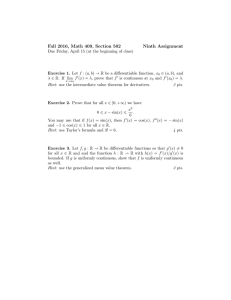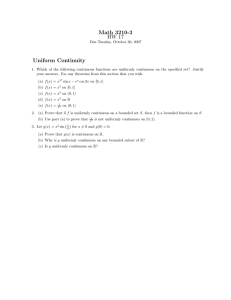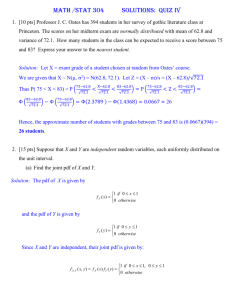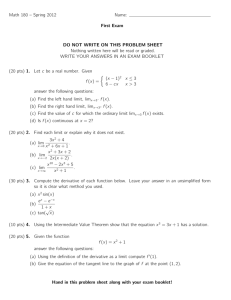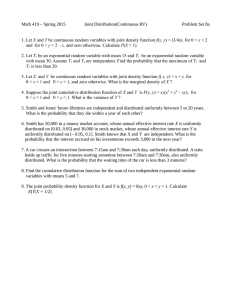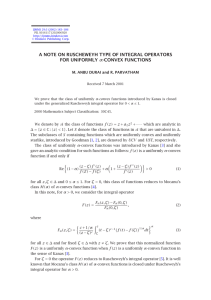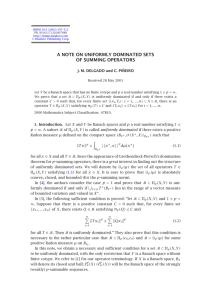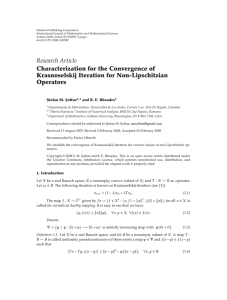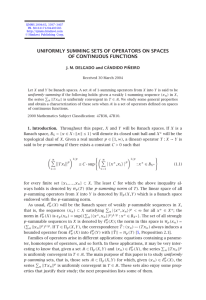Quiz 4
advertisement
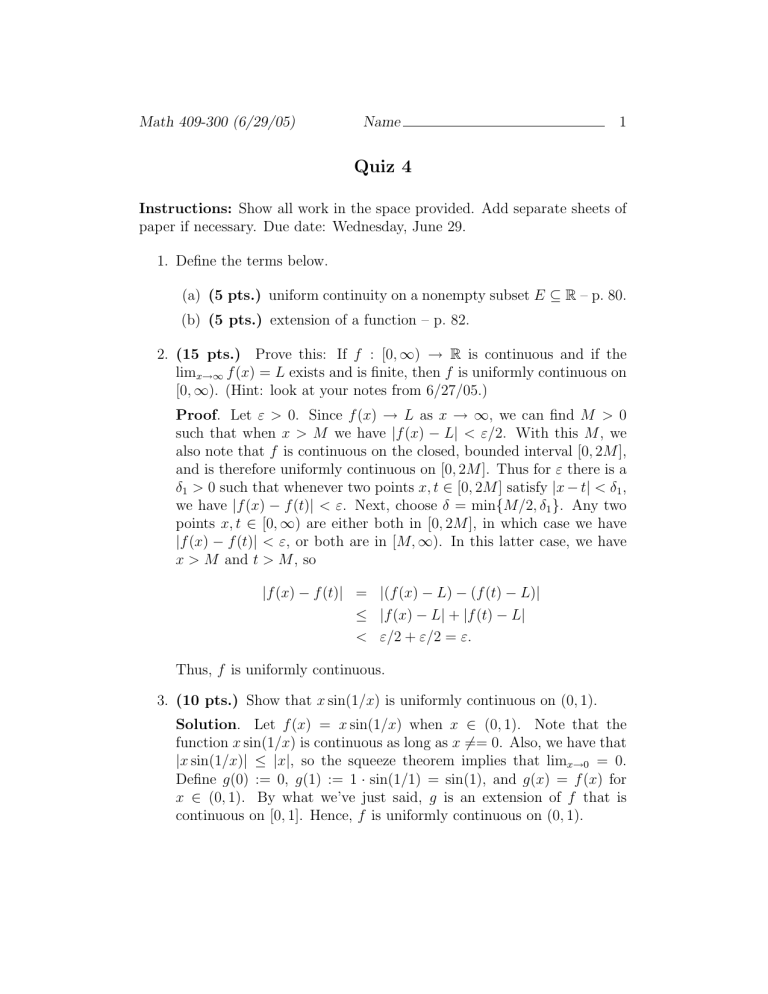
Math 409-300 (6/29/05)
Name
1
Quiz 4
Instructions: Show all work in the space provided. Add separate sheets of
paper if necessary. Due date: Wednesday, June 29.
1. Define the terms below.
(a) (5 pts.) uniform continuity on a nonempty subset E ⊆ R – p. 80.
(b) (5 pts.) extension of a function – p. 82.
2. (15 pts.) Prove this: If f : [0, ∞) → R is continuous and if the
limx→∞ f (x) = L exists and is finite, then f is uniformly continuous on
[0, ∞). (Hint: look at your notes from 6/27/05.)
Proof. Let ε > 0. Since f (x) → L as x → ∞, we can find M > 0
such that when x > M we have |f (x) − L| < ε/2. With this M , we
also note that f is continuous on the closed, bounded interval [0, 2M ],
and is therefore uniformly continuous on [0, 2M ]. Thus for ε there is a
δ1 > 0 such that whenever two points x, t ∈ [0, 2M ] satisfy |x − t| < δ1 ,
we have |f (x) − f (t)| < ε. Next, choose δ = min{M/2, δ1 }. Any two
points x, t ∈ [0, ∞) are either both in [0, 2M ], in which case we have
|f (x) − f (t)| < ε, or both are in [M, ∞). In this latter case, we have
x > M and t > M , so
|f (x) − f (t)| = |(f (x) − L) − (f (t) − L)|
≤ |f (x) − L| + |f (t) − L|
< ε/2 + ε/2 = ε.
Thus, f is uniformly continuous.
3. (10 pts.) Show that x sin(1/x) is uniformly continuous on (0, 1).
Solution. Let f (x) = x sin(1/x) when x ∈ (0, 1). Note that the
function x sin(1/x) is continuous as long as x 6== 0. Also, we have that
|x sin(1/x)| ≤ |x|, so the squeeze theorem implies that limx→0 = 0.
Define g(0) := 0, g(1) := 1 · sin(1/1) = sin(1), and g(x) = f (x) for
x ∈ (0, 1). By what we’ve just said, g is an extension of f that is
continuous on [0, 1]. Hence, f is uniformly continuous on (0, 1).
4. (15 pts.) Prove this: Suppose that f : [a, b) → R is continuous and
bounded on [a, b). If in addition f is increasing — i.e., x1 < x2 implies
f (x1 ) ≤ f (x2 ) —, then f is uniformly continuous on [a, b). (Hint: first
prove that f (b−) = limx→b− f (x) exists and is finite.)
Proof. Since f is bounded on [a, b), we can let L = supx∈[a,b) f (x). We
now apply the approximation property for suprema. For every ε > 0
there is a point y0 = f (x0 ) in the range of f such that L − ε < y0 =
f (x0 ) ≤ L. Choose δ = b − x0 > 0. Whenever 0 < b − x < δ, we have
x0 < x, so L − < f (x0 ) ≤ f (x) ≤ L; equivalently, |f (x) − L| < ε.
Thus, f (x) → L as x ↑ b. That is, f (b−) = L. Define the function
g(x) to be f (x) for x ∈ [a, b), and let g(b) = f (b−) = L. This makes g
a continuous extension of f to [a, b]. Thus, f is uniformly continuous
on [a, b). (There are other ways to get the extension, but this is the
fastest I know of.)
2
